
How to Use RC 27mhz Receiver: Examples, Pinouts, and Specs
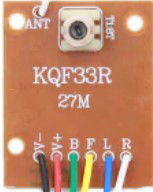
 Design with RC 27mhz Receiver in Cirkit Designer
Design with RC 27mhz Receiver in Cirkit DesignerIntroduction
The RC 27MHz Receiver is a radio frequency receiver that operates at 27 MHz. It is commonly used in remote control systems to receive signals from a transmitter. This component is essential in applications such as remote-controlled cars, boats, and other hobbyist projects where wireless communication is required.
Explore Projects Built with RC 27mhz Receiver
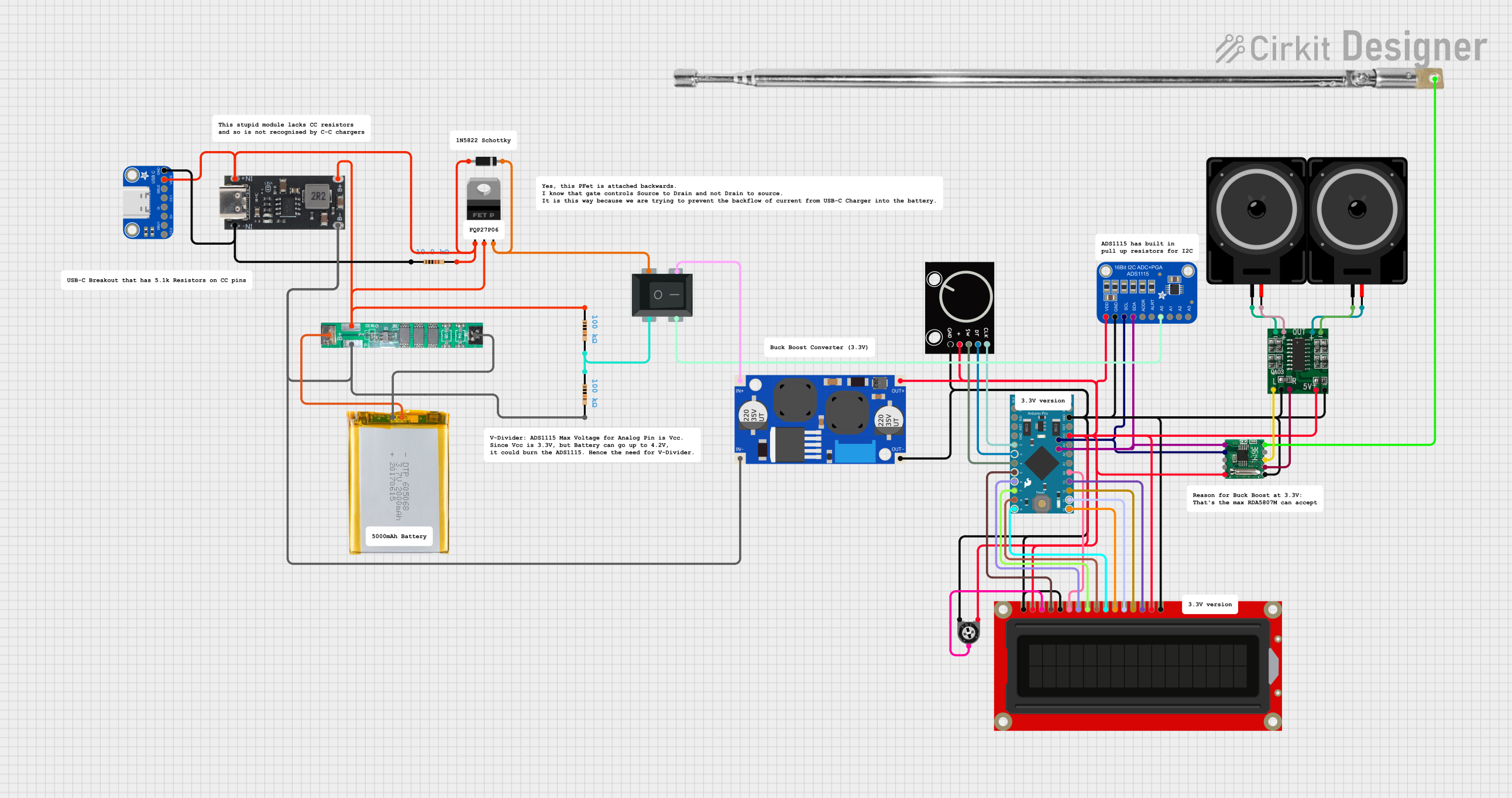
 Open Project in Cirkit Designer
Open Project in Cirkit Designer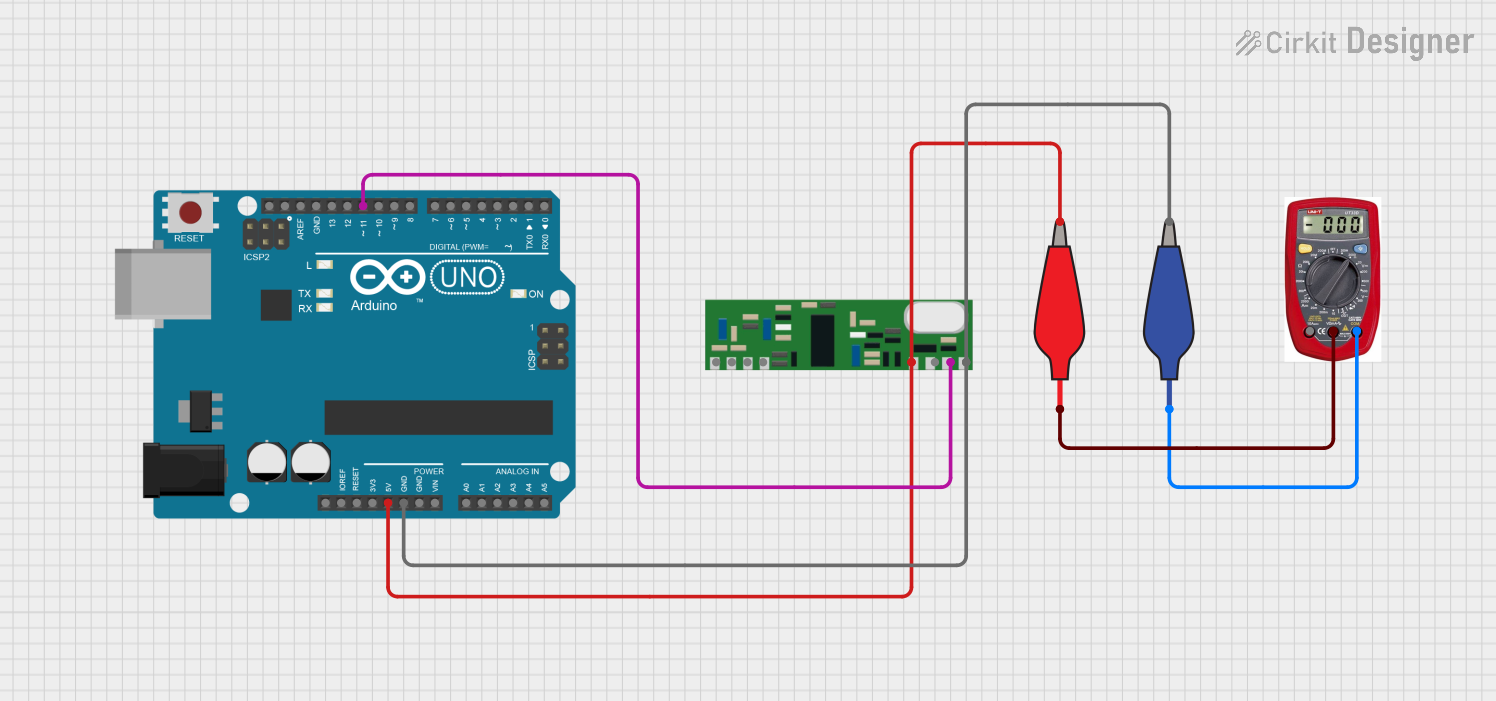
 Open Project in Cirkit Designer
Open Project in Cirkit Designer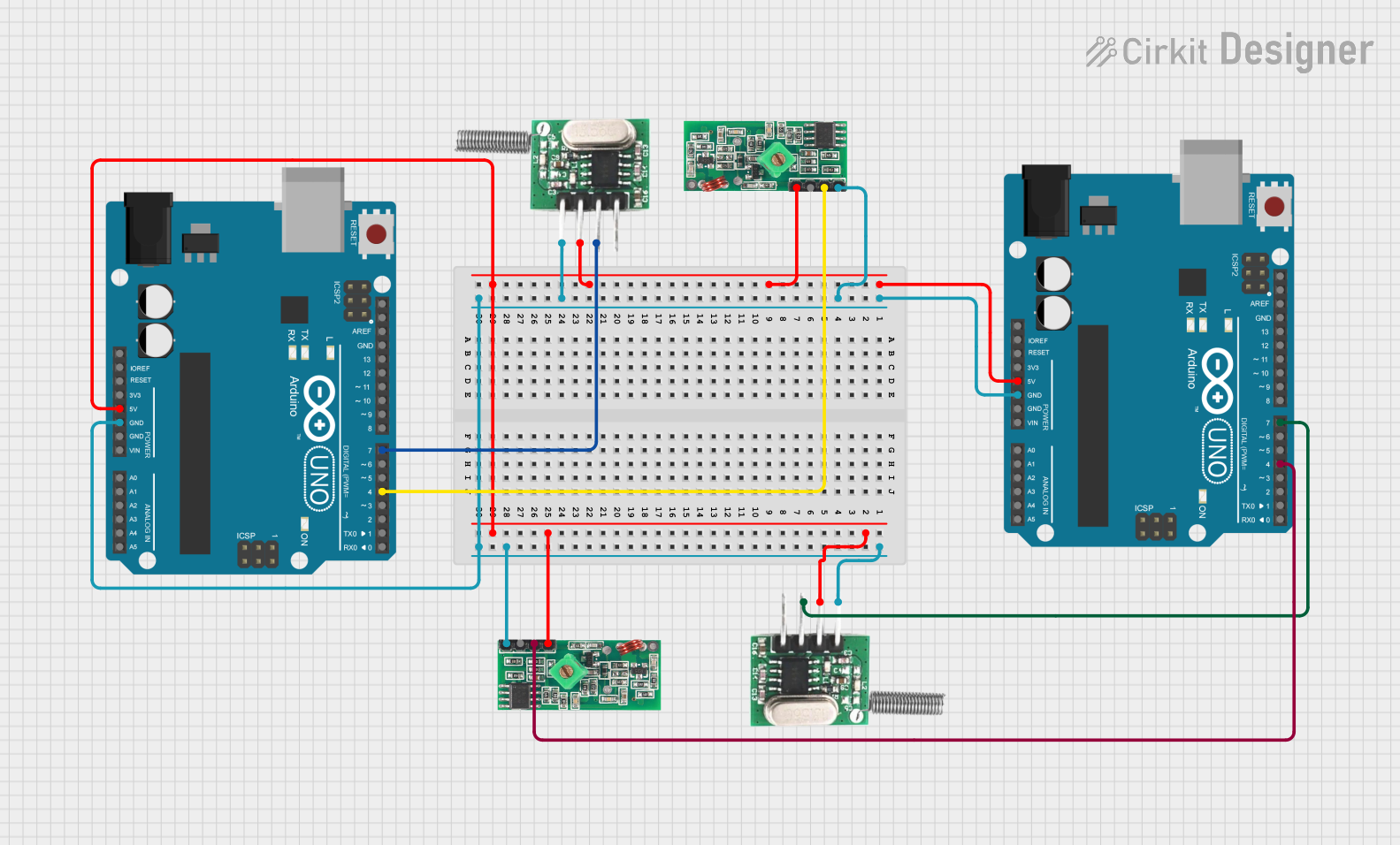
 Open Project in Cirkit Designer
Open Project in Cirkit Designer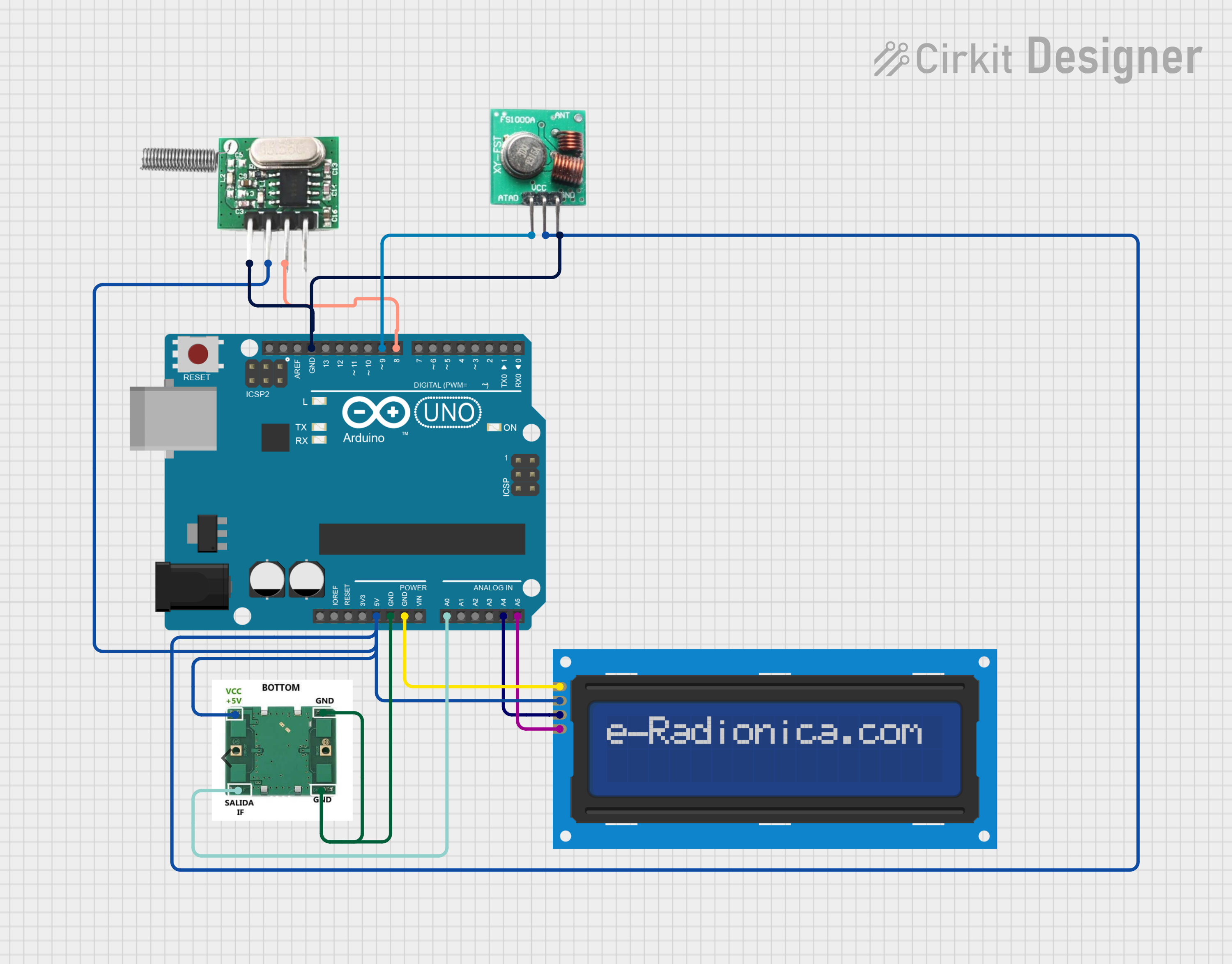
 Open Project in Cirkit Designer
Open Project in Cirkit DesignerExplore Projects Built with RC 27mhz Receiver

 Open Project in Cirkit Designer
Open Project in Cirkit Designer
 Open Project in Cirkit Designer
Open Project in Cirkit Designer
 Open Project in Cirkit Designer
Open Project in Cirkit Designer
 Open Project in Cirkit Designer
Open Project in Cirkit DesignerTechnical Specifications
Key Technical Details
| Parameter | Value |
|---|---|
| Operating Frequency | 27 MHz |
| Voltage Range | 4.5V - 6V |
| Current Consumption | 10mA - 20mA |
| Sensitivity | -105 dBm |
| Modulation Type | AM (Amplitude Modulation) |
| Output Type | Digital |
Pin Configuration and Descriptions
| Pin Number | Pin Name | Description |
|---|---|---|
| 1 | VCC | Power supply (4.5V - 6V) |
| 2 | GND | Ground |
| 3 | DATA | Digital output signal |
| 4 | ANT | Antenna connection |
Usage Instructions
How to Use the Component in a Circuit
- Power Supply: Connect the VCC pin to a 4.5V - 6V power supply. Ensure that the power supply is stable and within the specified range to avoid damaging the receiver.
- Ground Connection: Connect the GND pin to the ground of your circuit.
- Data Output: The DATA pin provides the digital output signal received from the transmitter. This pin can be connected to a microcontroller or any other digital input device.
- Antenna: Connect an appropriate antenna to the ANT pin to ensure proper reception of the 27 MHz signal.
Important Considerations and Best Practices
- Antenna Placement: Ensure that the antenna is placed in an open area, away from any metal objects or other sources of interference.
- Power Supply: Use a regulated power supply to avoid voltage fluctuations that could affect the receiver's performance.
- Signal Interference: Be aware of other devices operating at the same frequency (27 MHz) that could cause interference.
Example Circuit with Arduino UNO
Below is an example of how to connect the RC 27MHz Receiver to an Arduino UNO:
// Pin definitions
const int dataPin = 2; // Connect DATA pin of the receiver to digital pin 2
void setup() {
Serial.begin(9600); // Initialize serial communication at 9600 baud rate
pinMode(dataPin, INPUT); // Set dataPin as an input
}
void loop() {
int receivedSignal = digitalRead(dataPin); // Read the signal from the receiver
Serial.println(receivedSignal); // Print the received signal to the Serial Monitor
delay(100); // Small delay to avoid flooding the Serial Monitor
}
Troubleshooting and FAQs
Common Issues Users Might Face
No Signal Reception:
- Solution: Check the antenna connection and ensure it is properly placed. Verify that the transmitter is functioning correctly and within range.
Intermittent Signal:
- Solution: Ensure that there are no sources of interference nearby. Check the power supply for stability and proper voltage.
Incorrect Data Output:
- Solution: Verify the connections between the receiver and the microcontroller. Ensure that the data pin is correctly configured as an input.
FAQs
Q1: Can I use a different frequency transmitter with this receiver?
- A1: No, the RC 27MHz Receiver is specifically designed to operate at 27 MHz. Using a different frequency transmitter will not work.
Q2: What type of antenna should I use?
- A2: A simple wire antenna of approximately 1 meter in length is usually sufficient for most applications. Ensure that the antenna is placed in an open area for optimal reception.
Q3: Can I use this receiver with a 3.3V microcontroller?
- A3: The receiver requires a power supply of 4.5V - 6V. However, the data output can be interfaced with a 3.3V microcontroller using a level shifter or voltage divider.
By following this documentation, users should be able to effectively integrate the RC 27MHz Receiver into their projects, ensuring reliable wireless communication.